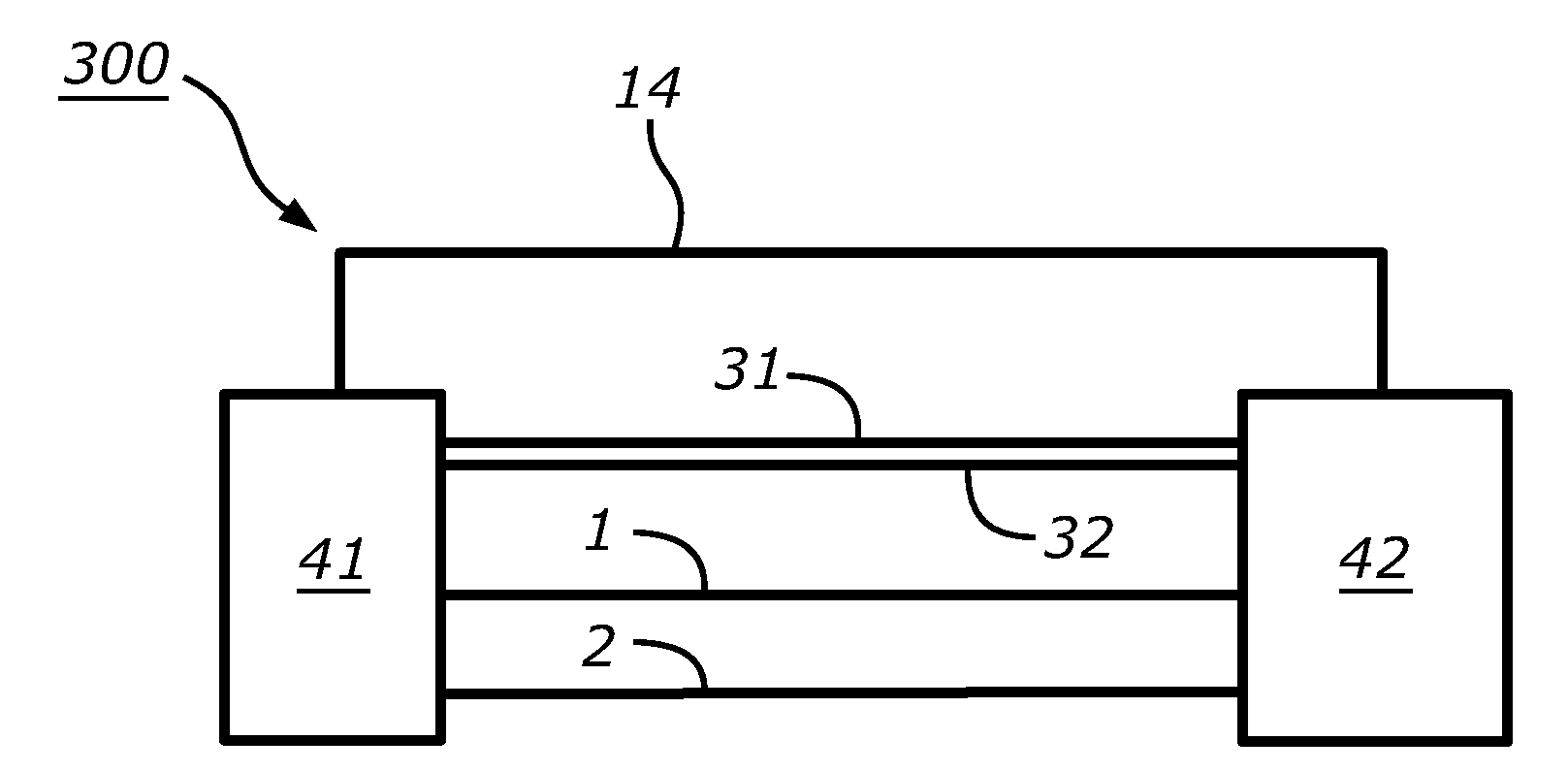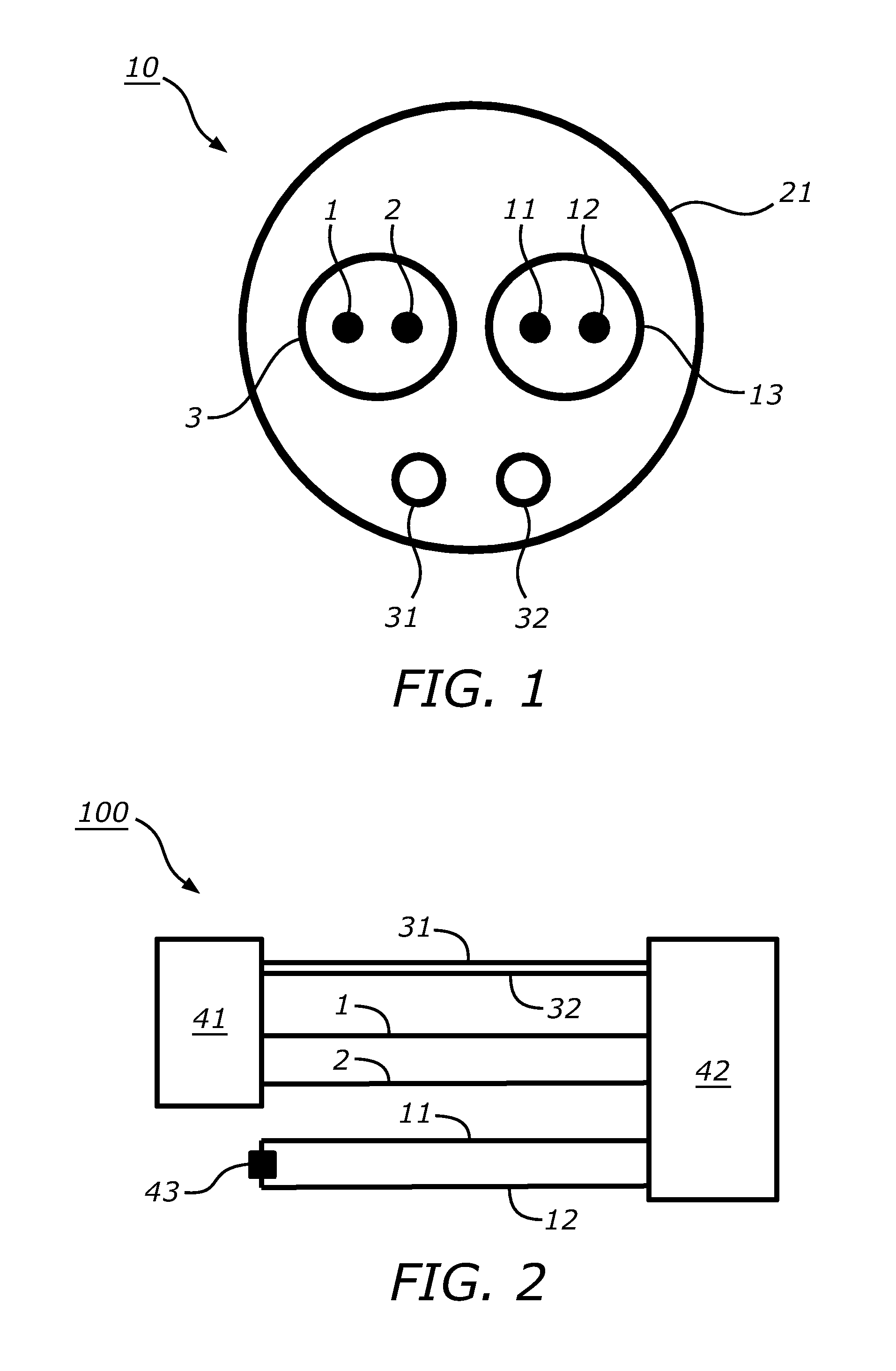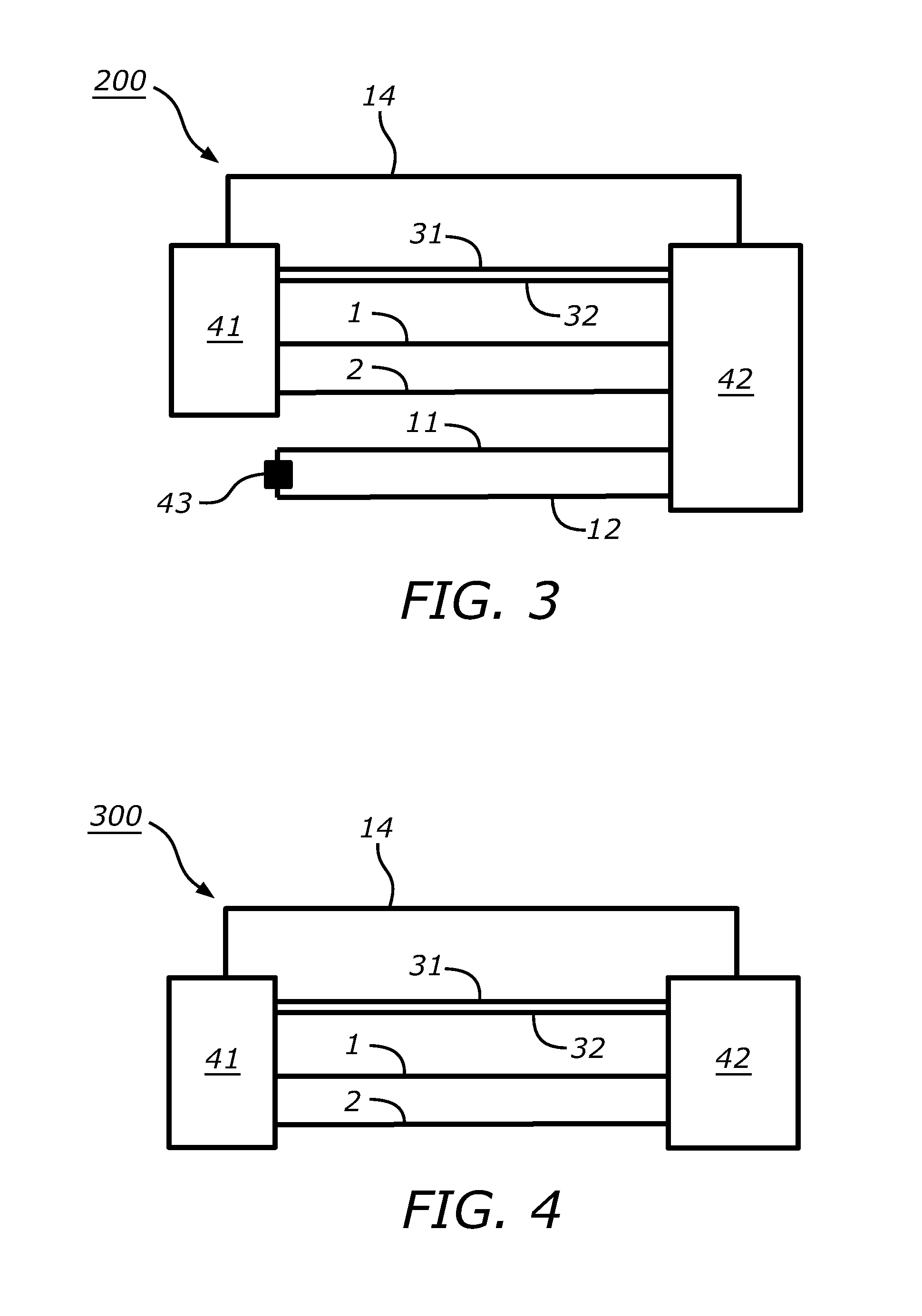Signal measuring system, method for electrically conducting signals and a signal cable
a signal measurement and signal cable technology, applied in the direction of noise figure or signal-to-noise ratio measurement, instruments, applications, etc., can solve the problems of unwanted signal, mechanical stress of the signal cable, noise that may be added, etc., to reduce the effect of noise on the signal quality and not increase the power usage or power loss
- Summary
- Abstract
- Description
- Claims
- Application Information
AI Technical Summary
Benefits of technology
Problems solved by technology
Method used
Image
Examples
Embodiment Construction
[0038]FIG. 1 shows a schematic cross-section of a signal cable 10 according to the invention. The signal cable 10 comprises, in this embodiment, a first signal lead 1 and a second signal lead 2 surrounded by a first shielding 3. The first signal lead 1 and the second signal lead 2 are adapted to electrically conduct a first signal and, in combination with the first shielding 3, form a signal conductor. The first signal may be any electrical signal, such as a voltage signal or a current signal that varies in amplitude as a function of time. For example, the first signal comprises a raw signal that is measured by a sensor and that has to be transported from the sensor to a signal processing unit via the signal cable 10. The signal cable 10 further comprises a first reference lead 11 and a second reference lead 12 surrounded by a second shielding 13. The combination of the first reference lead 11, the second reference lead 12 and the second shielding 13 forms a reference conductor. The...
PUM
 Login to View More
Login to View More Abstract
Description
Claims
Application Information
 Login to View More
Login to View More - R&D
- Intellectual Property
- Life Sciences
- Materials
- Tech Scout
- Unparalleled Data Quality
- Higher Quality Content
- 60% Fewer Hallucinations
Browse by: Latest US Patents, China's latest patents, Technical Efficacy Thesaurus, Application Domain, Technology Topic, Popular Technical Reports.
© 2025 PatSnap. All rights reserved.Legal|Privacy policy|Modern Slavery Act Transparency Statement|Sitemap|About US| Contact US: help@patsnap.com



